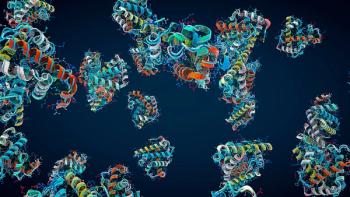
- BioPharm International-09-02-2009
- Volume 2009 Supplement
- Issue 5
Fermentation and Cell Culture
To assess current trends in fermentation and cell culture equipment, BioPharm International turned to Geoff Hodge, managing director of process technology, Xcellerex, Inc.; Günter Jagschies, senior director of strategic customer relations, life sciences, biotechnologies, GE Healthcare; and Rich Mirro, product manager, New Brunswick Scientific.
To assess current trends in fermentation and cell culture equipment, BioPharm International turned to Geoff Hodge, managing director of process technology, Xcellerex, Inc.; Günter Jagschies, senior director of strategic customer relations, life sciences, biotechnologies, GE Healthcare; and Rich Mirro, product manager, New Brunswick Scientific.
Q: What trends do you see emerging in fermentation and cell culture equipment?
Hodge: Single-use systems are gaining acceptance for cell-culture, and we are now seeing a move toward disposables in fermentation. Xcellerex is rolling out its first fermentation system at 30 L, and is seeing great interest in the marketplace. Another trend is the march to increased scale for cell culture reactors. Xcellerex introduced the first 1,000 L reactor, and later the first 2,000 L reactor.
Jagschies: Generally, smaller scale for MAb manufacturing than historical 10,000 L plus bioreactors, likely as low as 1,000 to 2,000 L bioreactors for full scale production. Titer driven trend, limited demand per branded product, and increased competition per medical indication. This scale will enable increased use of disposable bioreactors where few batches need to be run.
Mirro: We've seen an increased number of requests for integration of single-use technology into both process development and production applications.
Q: Are increasing titers changing the preferred size of commercial-scale bioreactors?
Hodge: We absolutely see the sweet-spot for commercial cell culture at 1,000–5,000 L. Increased titers and more specialized drugs obviate the need for larger reactors.
Mirro: Increased titers allow customers to operate smaller vessels, thereby saving floor space. However, downstream systems need to improve more to handle these increased titers.
Q: Over the next 5 to 10 years, how do you think the balance between stainless-steel and single-use bioreactors will evolve?
Hodge: Bioreactors and mixers will continue to evolve with improved designs. Along with filtration systems and storage containers, integration of sensors will bring process ananylitical technology (PAT) into single-use bioprocessing.
Jagschies: Disposable bioreactors will be used where relatively few batches are run and a financial advantage can be achieved with faster set-up and shorter change-over. Stainless steel bioreactors will prevail in intensive production of one product at tens to hundreds of batches.
Mirro: There will always be the need for stainless steel bioreactors, especially for microbial systems and single-product manufacturing facilities.
Q: Are there any important new trends in approaches to monitoring and controlling fermentation and cell culture operations?
Hodge: Something Xcellerex has worked on is adding flexibility to how a process can be controlled through customizable spargers and software. A single-use design allows an operator to adjust sparge and mix gases in ways that a fixed-pipe stainaless system could never handle. We are seeing great interest from customers in fine-tuning sparger selection as a strategy to regulate gas control.
Jagschies: Monitoring in disposable bioreactors is a current development area, with disposable sensors being discussed widely. Monitoring areas include viability, product concentration, specific nutrients, and infection risks.
Mirro: There has recently been a strong push from the FDA to integrate PAT into processes. The intent is to improve uniformity by reducing possible human error and variability.
Q: Do you foresee significant growth in markets for this equipment outside the US and Western Europe? If so, where is the market growing the fastest?
Hodge: We are seeing great interest in India, Japan, China, Korea, Mexico, and Israel. One driver for Xcellerex is the way our systems are designed to deliver turnkey GMP operations. For customers in developing countries, the prospect of a prevalidated biomanufacturing plant with pre-trained operators is a very attractive way to achieve GMP.
Jagschies: Production of biopharmaceuticals is being set up in India, China, southeast Asia, Korea, Brazil, and Russia. Percentage growth rates in these markets will be high (relative to low current value of the business there). Vaccines are an example where strong growth of equipment sales might be expected even in Europe and North America.
Mirro: Globally, we have seen continued growth in the bioprocess market.However, in Asia we have seen exceptionally large growth.
Q: Overall, what is the future of fermentation and cell culture equipment?
Hodge: One area worth mentioning is the renewed interest we are seeing in perfusion processes. Perfusion in stainless systems was an onerous task, but disposables make it much easier.
Jagschies: Currently, there is significant overcapacity of cell culture for MAbs in particular. This will create a lag phase in equipment investments, but the pipeline is strong and general trends for biologics are positive.
Mirro: Strong, especially if you can generate an income stream by supplying biotechnology and pharmaceuticals with single-use products that are integrated into and are essential for their manufacturing processes.
Articles in this issue
over 16 years ago
Contract Consulting & Pharmaceutical Services - Part 1over 16 years ago
Contract Consulting & Pharmaceutical Services - Part 2over 16 years ago
Contract Consulting & Pharmaceutical Services - Part 3over 16 years ago
Downstream Processingover 16 years ago
Contract Consulting & Pharmaceutical Services - Part 1over 16 years ago
Single-Use Bioprocessing Equipmentover 16 years ago
Laboratory Equipmentover 16 years ago
Information Technology, Automation, and Process ControlNewsletter
Stay at the forefront of biopharmaceutical innovation—subscribe to BioPharm International for expert insights on drug development, manufacturing, compliance, and more.



